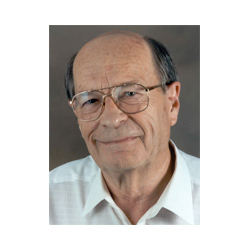
loudist: Mr. Neve, I wanted to thank you for your discussion on the web regarding the sampling ‘stairstep’ corner distortions in present day A/D converters.
What would be a solution to this anomaly?
Rupert Neve: OK, simple answer. Higher sampling rates.
Bink: How much do you think IC manufacturers’ unilateral decisions to pull chips out of production will affect your future designs? How do you design in a safety net for these caprices?
Rupert Neve: Bink—you are trying to scare me! All I can say is that solid state devices including very early transistors which were manufactured 30 or 40 years ago are still available.
Provided that they continue to be available for the next 25 years, it doesn’t actually worry me. I’ll then be over 100 years old and maybe able to retire.
Fletcher: A little bird mentioned that you were planning on doing some work with “iz Technologies”… anything you’d care to talk about?
Rupert Neve: The problem is a straight commercial one. There are a number of clients whom we are currently building relationships with and designing products which will be available within the next few months. Until they are ready to make public announcements I can only tickle your sensitivities by speaking mysteriously.
One clue I can give you is that any digital device – and there are some very good ones, now – benefit from extremely high quality analog amplifiers both before and after the digital. In the case of iz, they do have a remarkable hard disc recorder.
I have listened to material recorded on Radar and other hard disk machines and it is now possible to hear imperfections which are caused by inadequate mic or line pres. I won’t mention names but we now have to be very meticulous about the analog source.
RPhilbeck: Mr. Neve, when you say, “we”, are you referring to AMEK?
Rupert Neve: Mr. R Philbeck, AMEK has been my faithful client and friend for about 13 years. And most of what I am saying applies to my relationship with them. But, I do have other clients; one which you might find of interest, is not even in the pro audio business.
Taylor Guitars commissioned me to produce a totally new pickup and amplifier. We collaborated and closed on their implementation of a beautiful linear pickup. We have produced a range of guitars and equalizers which will be shown the first time at the NAMM show in January.
So these, too, will be come the “we” I am talking about. My various clients and I. Life gets more and more interesting as people become more and more aware of the need for a very high quality.
Lee: Do you have an opinion as to why it is so much more imperative to have high quality amplifiers when recording to digital than tape?
Rupert Neve: Lee, we are going back to the recorder. You mention tape. Now let’s bear in mind that even the best of our lovely old tape machines had amplifiers in them which did not measure up to the performance we can achieve today.
The tape medium imposed severe restrictions on the dynamic range and on the frequency response.
There was also a great deal of 3rd harmonic distortion which sounded great with some material but you can have too much of a good thing.
The tape machine would mask imperfections in the source material whereas even CD quality digital can produce dynamic range of 90 dB and a frequency response which may well be greater or at least more reliable than the old tape machine
Therefore you can see that although the distortions inherent in the low-grade digital are extremely distressing one still has to be very careful to maintain accurate source materials. I’ve expressed that rather badly but I hope I’ve conveyed my feelings about it.
